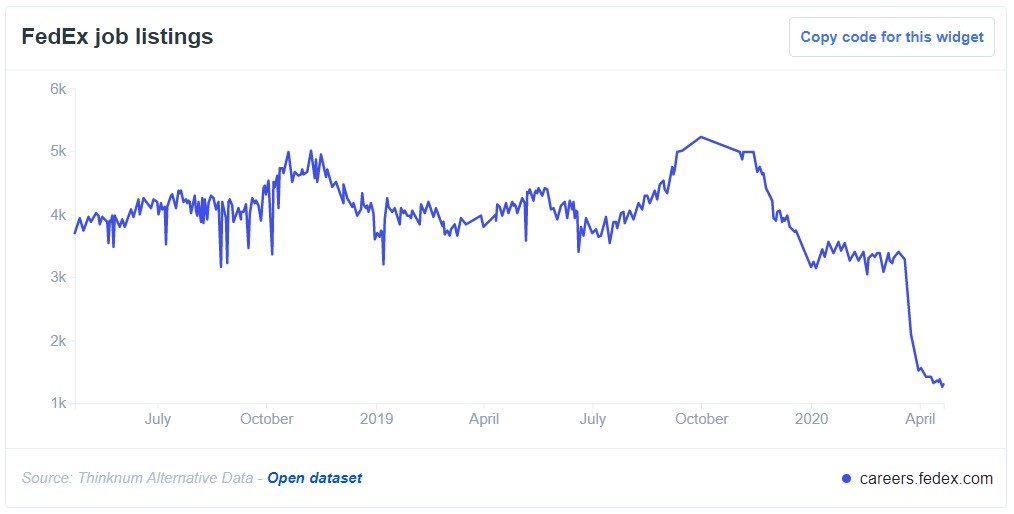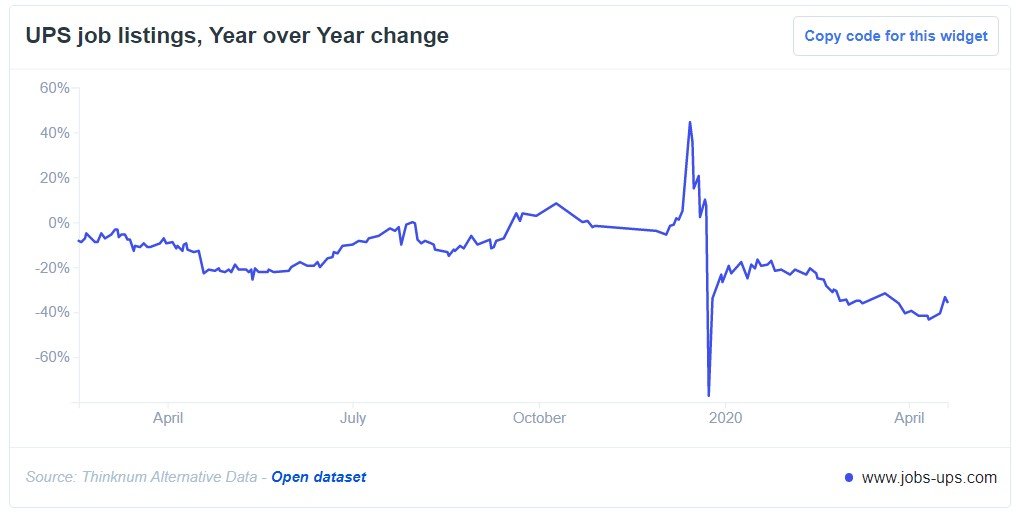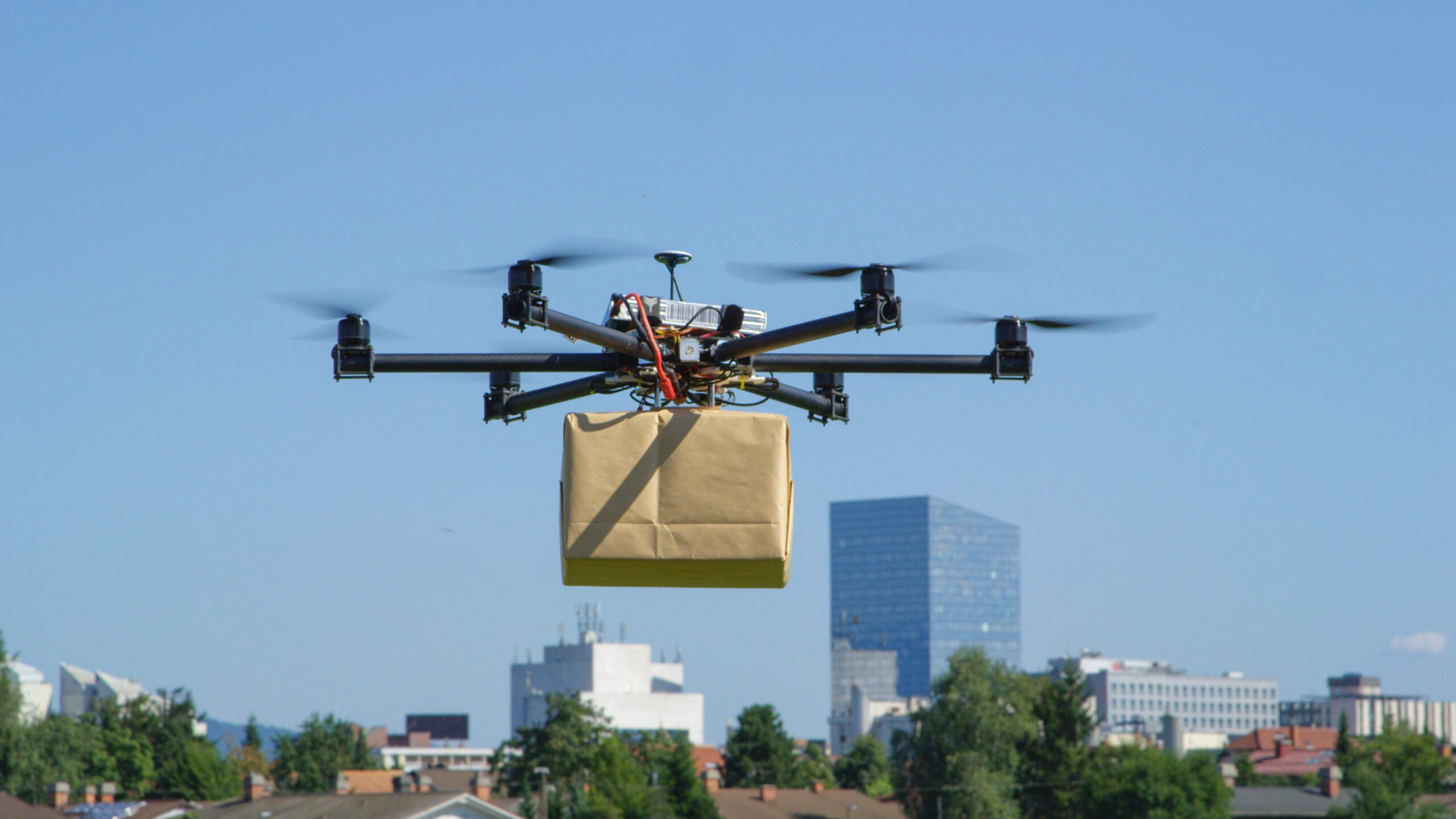Continuing with our Future of Work series, let’s explore the delivery and logistics industry. This industry went from being a relatively innocuous part of our society to a lifeline to critical supplies we need during this pandemic. In early 2020, the delivery organizations we were all used to, including USPS, FedEx and UPS, were beginning to compete on speed of delivery and were facing an insurgence of new, nimble competitors, some that were quickly growing their market share. When the pandemic hit, the landscape for these companies drastically changed. And now, the future for these companies looks very interesting, and the technology they employ could play a role in the direction they go.
Before the pandemic, the world of delivery and logistics was one where the major organizations were primarily competing around speed of shipment. Amazon amped everything up in April 2019, promising 1-day shipping for Prime customers. It did this not by working with delivery and logistics companies, but by opening new warehousing/shipping centers across the U.S. and tapping its employees to make deliveries. So, Amazon positioned itself not just as an online retailer, but another major shipping company competing with delivery and logistics organizations. This sparked a shipping war between UPS, FedEx and Amazon and caused FedEx to sever all of it’s working agreements with Amazon. Additionally, we saw FedEx take steps to move to 7-days per week of delivery and Amazon added free grocery delivery for Prime customers, which would become very important later on.
And then, the world shifted overnight. Many of us were all at once–as mentioned in our previous blog–trying to set up home offices, beginning to try to get our groceries through delivery services (like the newly launched one from Amazon), along with all of our usual ordering habits. This combination overloaded and pushed Amazon to stop their third-party retailers from shipping non-essential items to their warehouses, pushing delivery dates on those items far into the future.
This sudden rush of demand has impacted the employees who bring us these services in the form of stress related to not having enough fellow employees, fears of getting sick and some who are actually getting sick themselves. You might recall in our first blog in this series on the Future of Work, we discussed how ambiguity and the lack of information affects the human mind. That happened in the delivery and logistics industry too. In some cases, some delivery employees weren’t given information about what employees had become ill. Additionally, some employees were not given the proper equipment to stay safe while doing their work. And relatedly, during this time, delivery drivers have reported going to work sick due to a lack of necessary sick pay/leave. Thus, ambiguity and a lack of proper protection increased the fear and anxiety related to their safety, livelihood and the safety of their families. As a result of that fear, anxiety, and lack of acceptable sick pay or leave, this led to walkouts and protests like those seen at Amazon and Instacart.
An organizational-level effect that we’ve also seen is possible changes in hiring with these companies. There have been reports of increased hiring among the major delivery companies like UPS, FedEx, and now Amazon hiring as many as 100,000 new employees to deal with the uptick in business due to COVID-19. In addition, companies are awarding wage increases for all new and existing employees. However, an analysis of the job listings for FedEx and UPS indicates that hiring is actually down by as much as 62% from last year. One possible reason for these seemingly confusing results given the increase in demand is that these organizations may be making the assumption that the increase in demand will disappear as the country starts to reopen. And given those conditions, it makes more sense to try to absorb the increased demand without taking on the added cost of increased headcount until the demand is deemed consistent.


So, given what this industry has experienced, what does the future of work in delivery and logistics look like? If the challenges with the pandemic continue, we could see FedEx and UPS increase their hiring to address the long-term demand, matching Amazon’s efforts. We might also see other gig-economy companies like Uber (who have seen their existing business model suffer) begin to more consistently engage in package delivery. Additionally, Amazon is likely to continue consolidating it’s package delivery to an internal operation and creating an even more powerful hold on the entire spectrum of online retail and delivery/logistics industries.
An additional element of delivery that could be affected would be the handling of sensitive or important packages and documents. As a result of the pandemic, efforts have begun to generate a method of contactless delivery by creating a method of sign-off inside of an app that uses biometrics to confirm the recipient is actually the person who is supposed to receive the package.
 And this isn’t the only place that we’re seeing advances in technology to drive delivery and logistics innovation. In the past, drone-based delivery for packages had been looked at as an advancement that was interesting, but may lack the return-on-investment for regular delivery due to the high cost of usage. However, during the pandemic, work has been underway to use these delivery systems to create a safer way for those in vulnerable demographics to receive much needed supplies and medication. And now, as we move into a place where we’re considering what may come next, some are suggesting this may be a safer way all around for package delivery. That is, this would create safety for delivery drivers who might drive a vehicle into a region of the city and then dispatch drones from the vehicle to deliver packages to nearby doorsteps, keeping the driver and recipient from ever coming into contact. If this becomes the norm with cheaper, shorter-range drones, the job of delivery driver could include a skill related to drone operation, drastically changing that career path and the necessary skills.
And this isn’t the only place that we’re seeing advances in technology to drive delivery and logistics innovation. In the past, drone-based delivery for packages had been looked at as an advancement that was interesting, but may lack the return-on-investment for regular delivery due to the high cost of usage. However, during the pandemic, work has been underway to use these delivery systems to create a safer way for those in vulnerable demographics to receive much needed supplies and medication. And now, as we move into a place where we’re considering what may come next, some are suggesting this may be a safer way all around for package delivery. That is, this would create safety for delivery drivers who might drive a vehicle into a region of the city and then dispatch drones from the vehicle to deliver packages to nearby doorsteps, keeping the driver and recipient from ever coming into contact. If this becomes the norm with cheaper, shorter-range drones, the job of delivery driver could include a skill related to drone operation, drastically changing that career path and the necessary skills.
Finally and arguably most importantly, given the experiences of workers during this time, and the increased labor activism among delivery and logistics workers, we’re likely to see some drastic changes in the working conditions for these employees. Specifically, U.S. workers may have been viewed as “disposable” or not worth as much as employees in other parts of the American economy. However, due to our experiences during the pandemic, the American view of these workers has been shifting to view them as more essential to our survival and success. The shift has driven U.S. lawmakers to consider legislation to give these workers much-needed pay raises and protections and OSHA to generate new COVID-19 specific guidelines to protect them.
Thus, we can see how the American perspective has begun to shift on how essential delivery and logistics employees are and how they must be better protected and compensated. And since we may see technological advancements that will reduce the potential dangers for these employees, the anxiety of working in these conditions may bring bright futures and more lucrative possibilities for those who remain in these careers and enter them after the pandemic.
So, stick with us as we move on to our fifth and final installment in our ongoing series about the future of work. Next, we’ll explore the field of technology and IT, an industry that has been pushed to its breaking point as we all moved to work-from-home offices and put an historic strain on the Internet backbone. We’ll also look at how those experiences could drive changes in the field and those who work within it.
